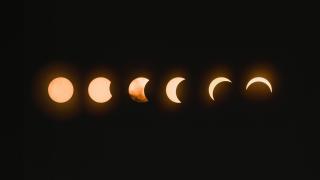Meditation on the Four Directions
In the pagan tradition, which is grounded in a respect and reverence for the natural world, calling upon the four directions is the usual way to begin any ceremony. Each direction is associated with an element of the natural world, and represents some part of our human nature as well. The directions are not seen as separate and isolated, but rather as part of the interdependent system that makes up the world. Here on our altar, we have the symbolic elements for each direction, and we will travel through the meanings associated with each direction before entering into a time of meditation.
We begin in the East, toward the rising sun. The element of the east is air, represented on our altar by a feather. Air and breath give us life. It is the direction of inspiration – the word that literally means to take in air. The east is associated with the mind, with knowledge and learning and intellectual curiosity. Imagine the birds, turning and wheeling in the air, imagine the breeze blowing through your hair. Turning toward the east, we look for a fresh start, an invigorating breath, a new idea. When you are feeling stuck in a rut, beholden to a routine, or if the wind has gone out of your sails, look eastward.
We move around the wheel to the south. The element of the south is fire, and in the southern place on our altar the flame of our chalice burns bright. Fire is a transformative force, it is heat and light and powerful change. In the Northern Hemisphere, it makes sense that we associate the south, towards the equator, with the warmth of the sun and the heat of the flame. We see birds move south, butterflies move south, whales move south, seeking warmer places when the weather gets cold. When our internal weather gets cold, turning south is a metaphor for turning toward warmth and daylight, seeking out the changes that will warm us up, get our blood moving, call us out of our winters, out of hibernation, into action.
Continuing around the circle, we arrive in the west. The element of the west is water, and here on our altar we have some of the water collected at our Ingathering services each September. We add to this water each year, symbolizing the way we come together in our community as individual drops join into a mighty river. In the west, we are drawn into the experience of our emotions. It is a direction that calls us to self-reflection and self-understanding. Our emotions move in us like water, flowing through our lives, sometimes calm and sometimes turbulent, but always flowing. When we dam up our feelings, just like when we dam up a river, the pressure builds until it finds an outlet. If you are seeking to get in touch with your inner life, with your emotions, turn towards the west.
We move now to the North. The element of the North is earth, represented here by some dirt from our very own garden. There is stability here, the ground of our being. The north represents the place that holds us, that allows us time and space to heal and grow, to feel nurtured and respected. It is also the place of embodiment, of connecting with our physical self, with the concrete, tangible world around us. The north calls to you if you are seeking balance, the deep wisdom that lives in your bones, a place of rest and recovery.
(Note: the above could be read by multiple voices)
We have moved through these four directions, given them shape and meaning:
East: Air, breath and inspiration.
South: Fire, transformation and action.
West: Water, feeling and reflection.
North: Earth, balance and wisdom.
Now, I invite you to turn toward the direction that calls to you today. You can stay in your seat, you can stand, you can turn your head or your whole body, but orient yourself toward the one of the directions, the element that speaks to you and your life right now, and when I ring the bowl gong, we will enter into two minutes of silent meditation.
| Date added | |
|---|---|
| Tagged as |

